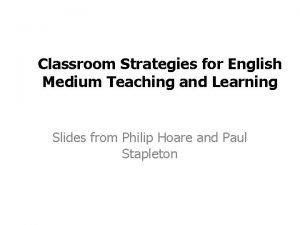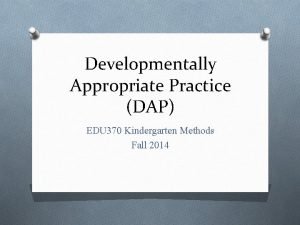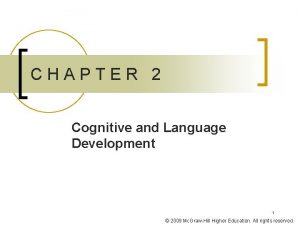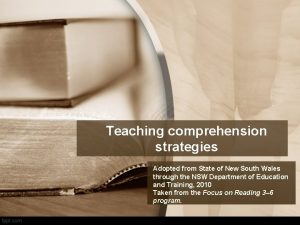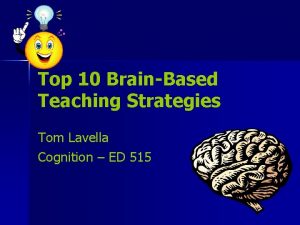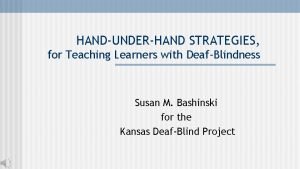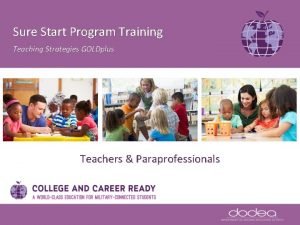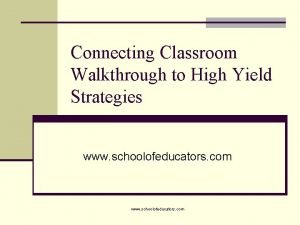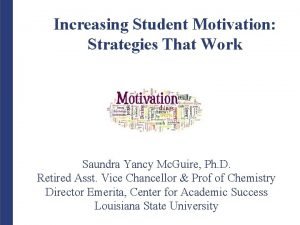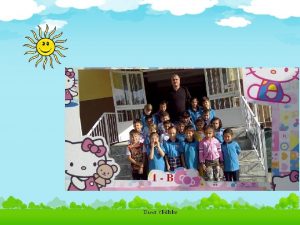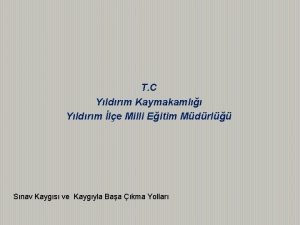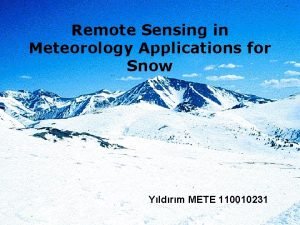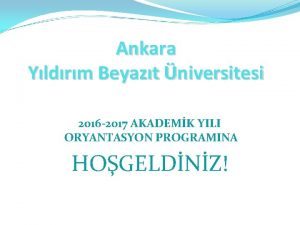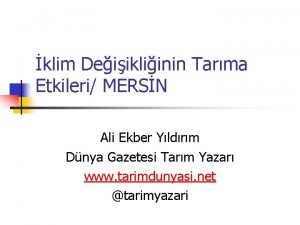Teaching Strategies Pnar Yldrm Teaching Strategies l l











- Slides: 11

Teaching Strategies Pınar Yıldırım

Teaching Strategies l l Teaching strategy is ways of presenting instructional materials or conducting instructional activities. There a variety of teaching strategies that instructors can use to improve student learning.

Learner-Centered Teaching l Learner-Centered teaching means the student is at the center of learning. The student assumes the responsibility for learning while the instructor is responsible for facilitating the learning. Thus, the power in the classroom shifts to the student.

Collaborative/Cooperative Learning l Cooperative and collaborative learning are instructional approaches in which students work together in small groups to accomplish a common learning goal. They need to be carefully planned and executed, but they don't require permanently formed groups.

Team-Based Learning l Team-based learning (TBL) is a fairly new approach to teaching in which students rely on each other for their own learning and are held accountable for coming to class prepared. Research has found that students are more responsible and more engaged when team-based learning is implemented. The major difference in TBL and normal group activities is that the groups are permanent and most of the class time is devoted to the group meeting.

Discussion Strategies l Engaging students in discussion deepens their learning and motivation by propelling them to develop their own views and hear their own voices. A good environment for interaction is the first step in encouraging students to talk.

Humor in the Classroom l Using humor in the classroom can enhance student learning by improving understanding and retention.

Inquiry-Guided Learning l With the inquiry method of instruction, students arrive at an understanding of concepts by themselves and the responsibility for learning rests with them. This method encourages students to build research skills that can be used throughout their educational experiences.

Games/Experiments/Simulations l Games, experiments and simulations can be rich learning environments for students. Students today have grown up playing games and using interactive tools such as the Internet, phones, and other appliances. Games and simulations enable students to solve real-world problems in a safe environment and enjoy themselves while doing so.

Experiential Learning l Experiential learning is an approach to education that focuses on "learning by doing, " on the participant's subjective experience. The role of the educator is to design "direct experiences" that include preparatory and reflective exercises.

References l l http: //pedagogy. merlot. org/Teaching. Strategies. html http: //www. gmu. edu/resources/facstaff/parttime/strategy. html
 Emi teaching strategies
Emi teaching strategies Dap kindergarten
Dap kindergarten Piaget teaching strategies
Piaget teaching strategies Super six comprehension strategies nsw det
Super six comprehension strategies nsw det Top 10 brain-based teaching strategies
Top 10 brain-based teaching strategies Principles of remedial teaching
Principles of remedial teaching Deaf-blindness teaching strategies
Deaf-blindness teaching strategies Teaching strategies gold app
Teaching strategies gold app High yield strategies marzano
High yield strategies marzano Micro teaching is a scaled down encounter
Micro teaching is a scaled down encounter Strategies of motivation
Strategies of motivation Five generic competitive strategies examples
Five generic competitive strategies examples
